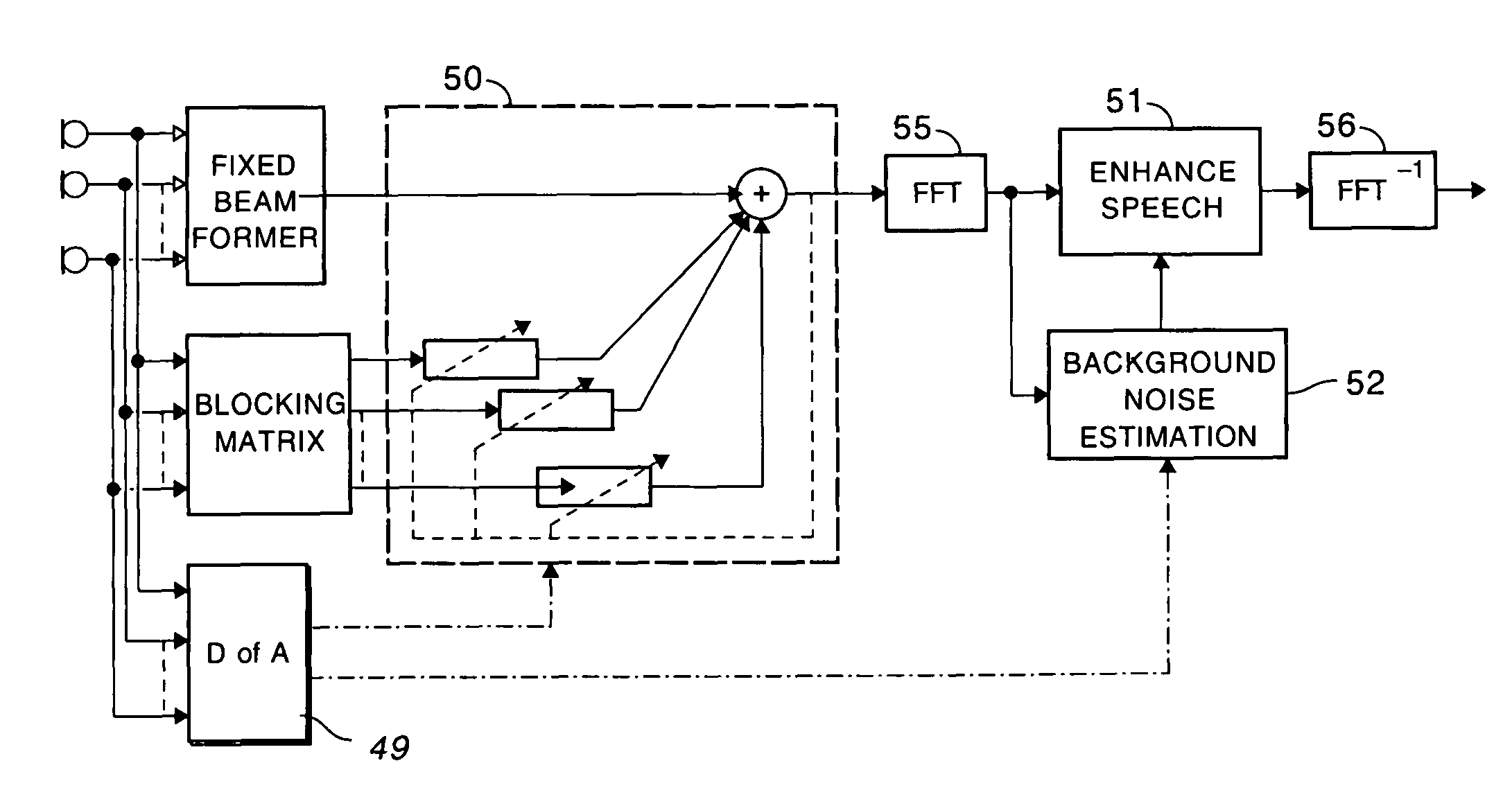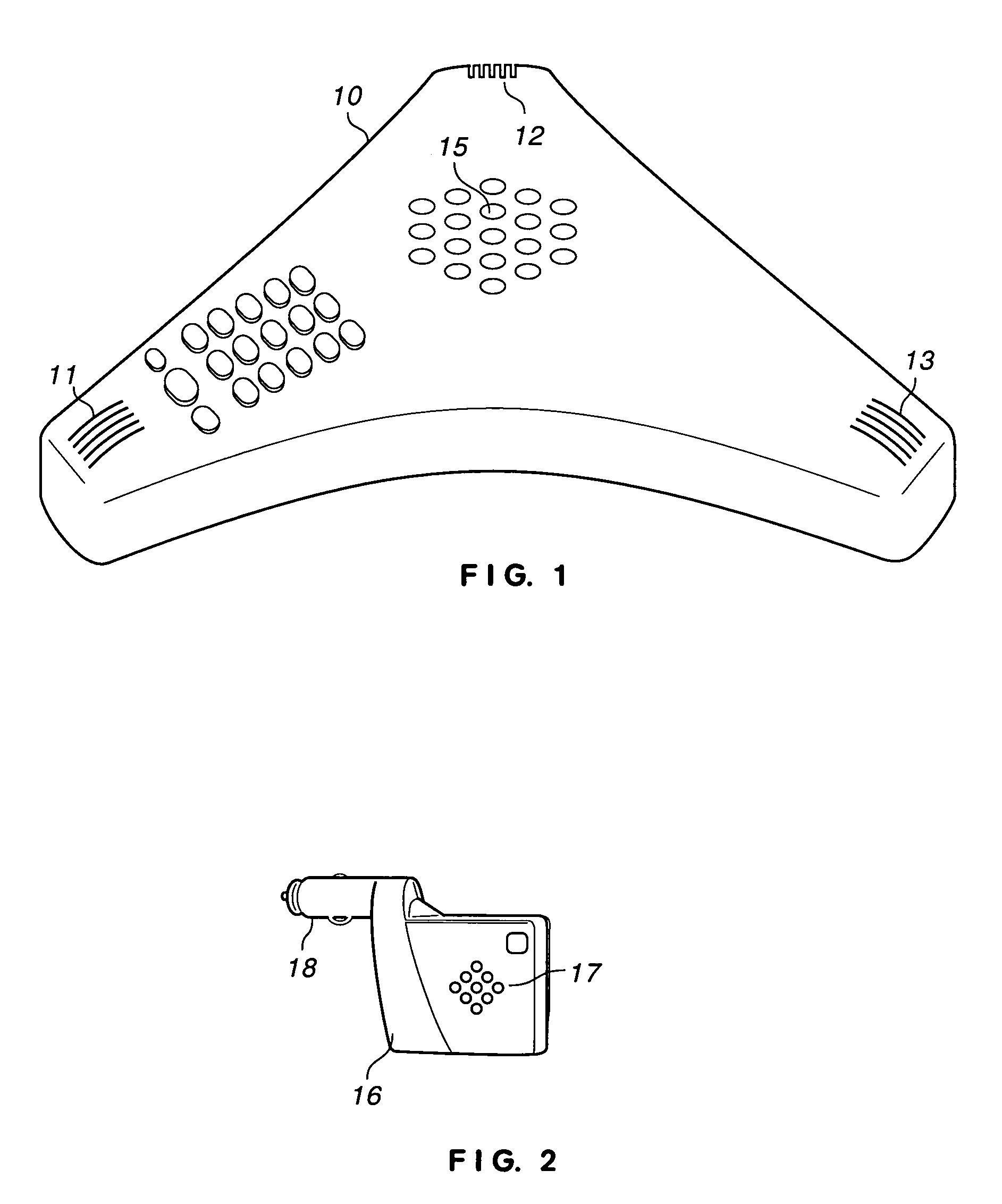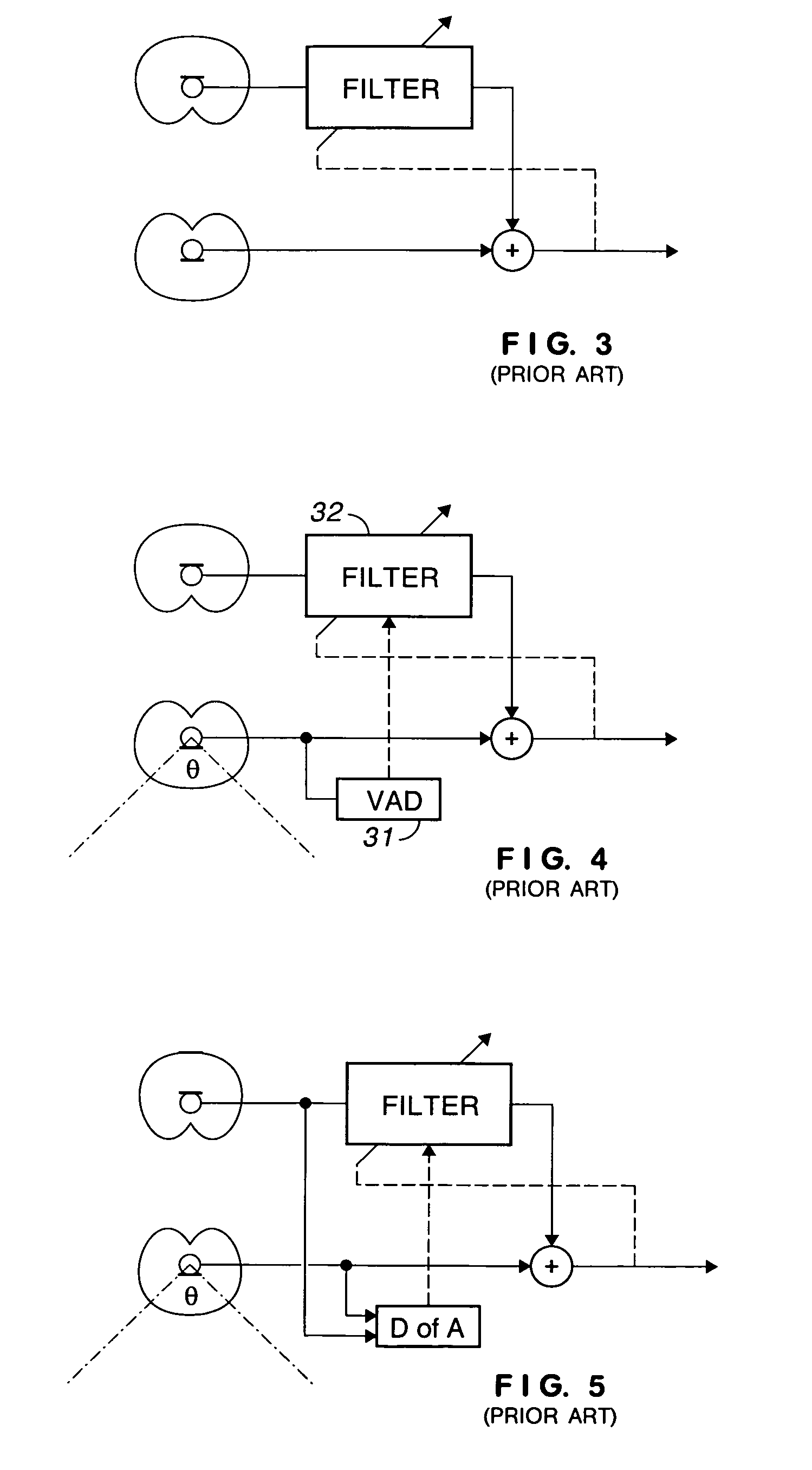Estimating direction of arrival from plural microphones
a technology of plural microphones and directions, applied in the field of audio signal processing, can solve the problems of difficult to reduce noise, difficult for these techniques to remove noise without damaging the desired speech, and often loud relative to the desired speech, and achieve the effect of accurately determining the direction of arrival
- Summary
- Abstract
- Description
- Claims
- Application Information
AI Technical Summary
Benefits of technology
Problems solved by technology
Method used
Image
Examples
Embodiment Construction
Basic Technology
[0044]The direction for arrival is generally estimated by first estimating the time difference of arrival (TDOA) between the sensors. Specifically, for a linear microphone array, if d is the distance between the microphones, direction of arrival θ and time difference of arrival τ are related by
[0045]θ=sin-1(cτd).
where c is the velocity of sound in air, which is equal to 346 m / sec at 77° F. (25° C.).
[0046]Many different techniques are available to estimate TDOA. Some of the techniques include, cross-correlation, absolute magnitude difference function (AMDF), least mean square (LMS), beam-steering, signal energy difference between beam-former / null-former input and output, subspace based methods and blind system identification.
[0047]The cross-correlation based method works by simply computing the cross-correlation between microphones and picking the lag corresponding to the maximum cross-correlation value.
[0048]The AMDF-based method is very similar to the cross-corre...
PUM
 Login to View More
Login to View More Abstract
Description
Claims
Application Information
 Login to View More
Login to View More - R&D
- Intellectual Property
- Life Sciences
- Materials
- Tech Scout
- Unparalleled Data Quality
- Higher Quality Content
- 60% Fewer Hallucinations
Browse by: Latest US Patents, China's latest patents, Technical Efficacy Thesaurus, Application Domain, Technology Topic, Popular Technical Reports.
© 2025 PatSnap. All rights reserved.Legal|Privacy policy|Modern Slavery Act Transparency Statement|Sitemap|About US| Contact US: help@patsnap.com



